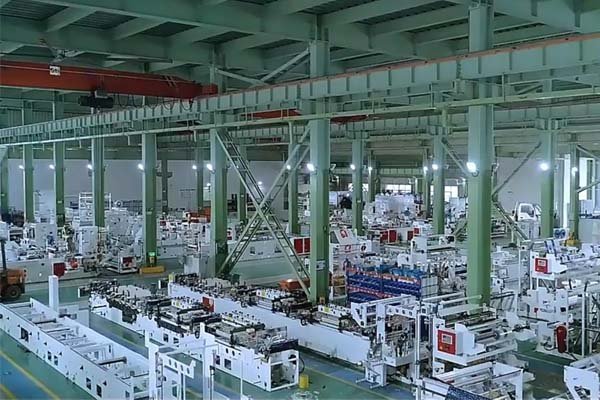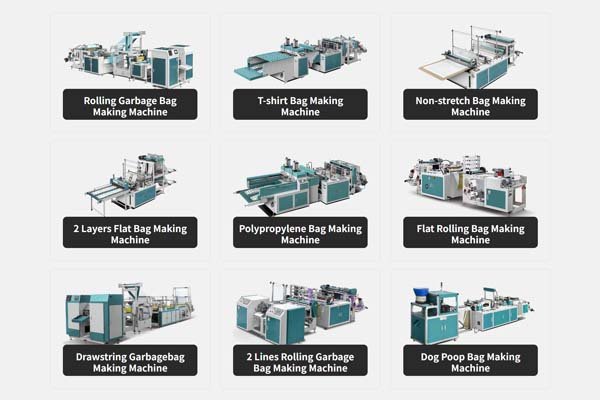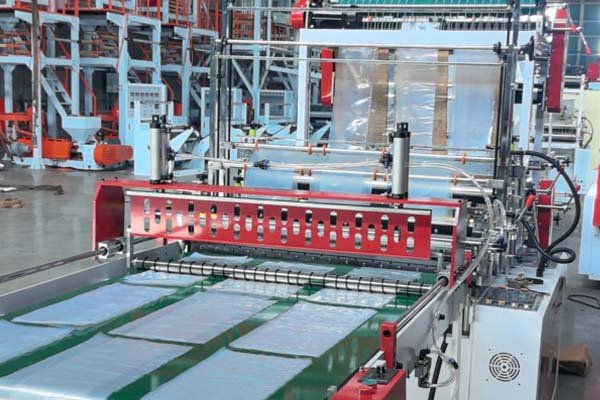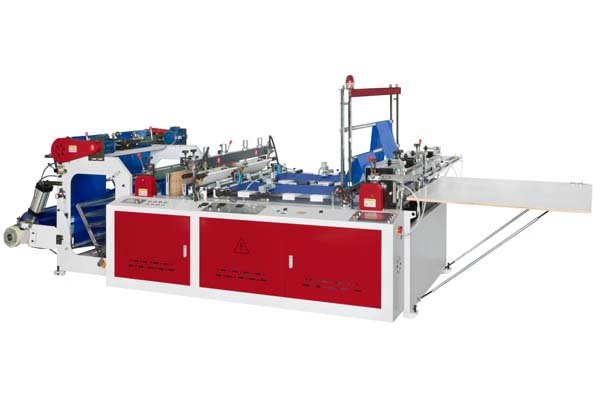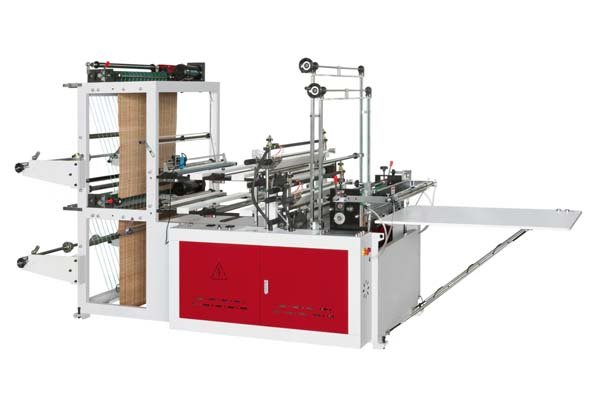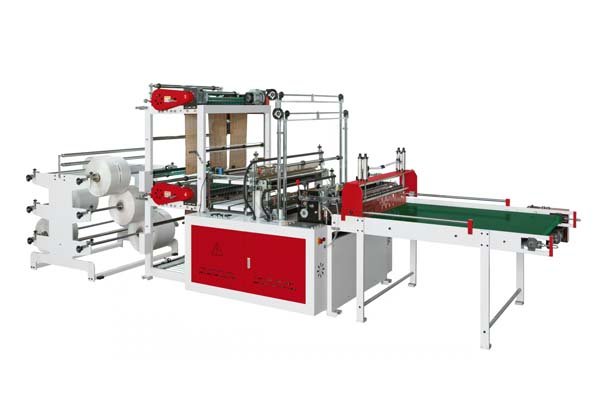
Are you struggling with inconsistent film quality? This problem often leads to wasted material and production delays. Understanding common mistakes when adjusting the blow-up ratio1 (BUR) is the first step to fixing these issues for good.
The most common mistakes are miscalculating the ratio, using the same settings for different plastic resins, and failing to adjust cooling and speed at the same time. This leads to unstable bubbles and poor-quality film.
The blow-up ratio is a critical setting in blown film extrusion. It determines the final width and thickness of your film. We calculate it by dividing the final bubble diameter by the die diameter. Many operators make small errors here that cause big problems. They might not measure the bubble accurately, or they forget to balance the BUR with other machine settings. This creates a domino effect. A small mistake can lead to issues like uneven film thickness, weak spots, or even bubble breaks that halt production.
At BagMec®, we see how these issues impact businesses. The key is not just knowing the formula, but also understanding how the BUR interacts with the entire system. This includes the material you are using, the temperature of the plastic melt, and the speed of your production line. Getting these elements to work together is essential for high-quality output.
How Does Resin Type Affect the Ideal Blow-Up Ratio?
Ever wonder why the same settings don't work for different plastics? The resin you use is a huge factor. Let’s look at why your material choice changes everything for the blow-up ratio.
Different resins have unique melt strengths and stretching abilities. For instance, flexible LDPE can handle a high BUR, but a stiffer material like HDPE needs a lower, more controlled BUR to avoid tearing during expansion.

When we talk about making plastic bags, the type of plastic pellet you start with is very important. Each material behaves differently when it is melted and stretched into a bubble. This is why a one-size-fits-all approach to the blow-up ratio never works.
Comparing Common Film Resins
Different polymers have their own ideal processing conditions. Understanding them helps you set the right BUR from the start.
- LDPE (Low-Density Polyethylene): This material is known for its high melt strength, which means it is strong and stretchy when molten. You can use a higher BUR, often between 2.5:1 and 4.0:1. It's great for making T-shirt bags and liners.
- HDPE (High-Density Polyethylene): HDPE is much stiffer and has lower melt strength. It requires a lower BUR, typically from 3.0:1 to 5.0:1, and needs very stable processing. It's used for strong, thin films like garbage bags.
- LLDPE (Linear Low-Density Polyethylene): This resin offers great puncture resistance. Its ideal BUR is usually between that of LDPE and HDPE, around 2.0:1 to 3.5:1.
- Biodegradable Resins (like PLA): These eco-friendly materials are often more brittle. They can't stretch as much, so they need a much lower BUR, usually around 1.5:1 to 2.5:1. Our machines are designed to handle these sensitive materials with precision.
Resin Comparison Table
Here is a simple table to help you remember the differences.
| Resin Type | Typical BUR Range | Key Characteristic | Common Application |
|---|---|---|---|
| LDPE | 2.5:1 - 4.0:1 | High Melt Strength | T-Shirt Bags, Liners |
| HDPE | 3.0:1 - 5.0:1 | High Stiffness | Garbage Bags, Thin Films |
| LLDPE | 2.0:1 - 3.5:1 | Puncture Resistance | Stretch Wrap, Heavy Duty Bags |
| Biodegradable (PLA) | 1.5:1 - 2.5:1 | Brittle, Lower Stretch | Eco-friendly Packaging |
Why Is Consistent Cooling Crucial When Setting the BUR?
You set the perfect BUR, but the film is still uneven. The problem might be how the bubble cools, not its size. Proper cooling is just as important as the BUR itself.
Consistent cooling is essential because it locks in the film's properties at the frost line. Uneven cooling from a misaligned air ring will cause thick and thin spots, even if your BUR calculation is correct.
Think of the cooling process as freezing the plastic film in its stretched state. If one side of the bubble cools faster than the other, you create stress and inconsistency in the final product. A high-quality air ring is the most important tool for this job.
The Role of the Air Ring
The air ring's job is to deliver a perfectly uniform curtain of cool air around the entire bubble. Any problems here will show up in your film.
- Alignment is Key: If the air ring is not perfectly centered with the die, one side of the bubble will get more air. This side will cool faster, creating a thick spot, while the other side remains thinner.
- Cleanliness Matters: Dust and debris can block the air vents. This disrupts the airflow and causes random gauge bands and weak spots in the film. Regular cleaning is a simple but vital maintenance task.
- Correct Air Pressure: Too much air can make the bubble unstable and flutter. Too little air won't cool the film fast enough, especially at high production speeds. Our BagMec® machines feature precision-engineered air rings to ensure stable and uniform cooling.
What Is the Frost Line?
The frost line is the point on the bubble where the molten plastic turns into a solid film. You can see it because the plastic changes from clear to hazy.
A stable, even frost line is the best indicator of a healthy production process. If the frost line is moving up and down, it means your process is unstable. This could be due to a BUR that is too high, poor temperature control, or inconsistent cooling2. Our Smart Tension Control technology helps maintain stability across the entire line, which keeps the frost line steady and ensures consistent film quality.
How Do I Systematically Troubleshoot BUR-Related Film Defects?
Are you seeing wrinkles, haze, or weak spots in your film? Don't just guess what's wrong. Here is a simple, step-by-step way to find and fix the problem.
First, confirm your BUR calculation is correct. Second, check for stable cooling and a clean air ring. Third, adjust the BUR in small steps while watching the frost line and the final film for changes.
Troubleshooting should be a logical process, not a guessing game. By changing one variable at a time, you can quickly identify the root cause of a defect. Rushing to change multiple settings at once will only make it harder to find the solution.
A Simple Troubleshooting Checklist
- Verify the Numbers: Double-check your bubble and die diameter measurements. Is your BUR calculation correct?
- Check the Bubble: Is the bubble stable, or is it swaying or fluttering? An unstable bubble is the first sign of a problem.
- Inspect the Air Ring: Is it clean and centered? Is the airflow even all the way around?
- Observe the Frost Line: Is it a consistent height from the die, or is it fluctuating?
- Adjust Slowly: Make one small adjustment at a time. Change the air volume or the BUR slightly, then wait to see the effect on the film.
Common Defects and Potential Fixes
This table can help you quickly identify a potential solution for common film problems.
| Film Defect | Potential Cause Related to BUR | Recommended Action |
|---|---|---|
| Wrinkles in Film | BUR is too high for the cooling rate, or tension is wrong. | Check nip roller pressure. Slightly decrease the BUR or increase cooling airflow. |
| Uneven Thickness | Inconsistent cooling from the air ring or an unstable bubble. | Check and clean the air ring. Ensure the bubble is stable. Adjust BUR slowly. |
| Hazy or Poor Clarity | The melt temperature is too low or the BUR is too low (not enough stretch). | Gradually increase melt temperature. Try a slightly higher BUR. |
| Frequent Bubble Breaks | BUR is too high for the resin's melt strength. | Reduce the BUR. Check for drafts. Consider a resin with higher melt strength. |
Conclusion
Getting the blow-up ratio right is about more than a single number. It requires understanding your material, ensuring consistent cooling, and making systematic adjustments. With the right knowledge, operators can produce high-quality film efficiently and avoid costly mistakes.
-
Understanding the blow-up ratio is crucial for optimizing film quality and production efficiency. Explore this link to learn more about its significance. ↩
-
Consistent cooling is vital for achieving high-quality film. Learn about its role and how to maintain it effectively in your production process. ↩

